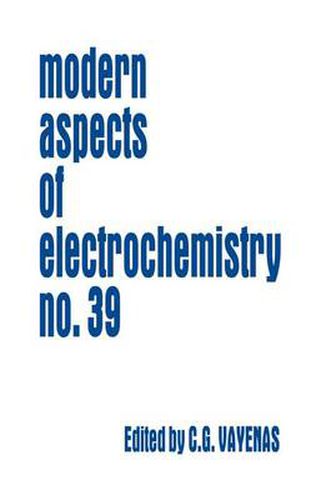Readings Newsletter
Become a Readings Member to make your shopping experience even easier.
Sign in or sign up for free!
You’re not far away from qualifying for FREE standard shipping within Australia
You’ve qualified for FREE standard shipping within Australia
The cart is loading…






This title is printed to order. This book may have been self-published. If so, we cannot guarantee the quality of the content. In the main most books will have gone through the editing process however some may not. We therefore suggest that you be aware of this before ordering this book. If in doubt check either the author or publisher’s details as we are unable to accept any returns unless they are faulty. Please contact us if you have any questions.
This volume of Modern Aspects covers a wide spread of topics presented in an authoritative, informative and instructive manner by some internationally renowned specialists. Professors Politzer and Dr. Murray provide a comprehensive description of the various theoretical treatments of solute-solvent interactions, including ion-solvent interactions. Both continuum and discrete molecular models for the solvent molecules are discussed, including Monte Carlo and molecular dynamics simulations. The advantages and drawbacks of the resulting models and computational approaches are discussed and the impressive progress made in predicting the properties of molecular and ionic solutions is surveyed. The fundamental and applied electrochemistry of the silicon/electrolyte interface is presented in an authoritative review by Dr. Gregory Zhang, with emphasis in the preparation of porous silicon, a material of significant technological interest, via anodic dissolution of monocrystalline Si. The chapter shows eloquently how fundamental electrokinetic principles can be utilized to obtain the desired product morphology. Markov chains theory provides a powerful tool for modeling several important processes in electrochemistry and electrochemical engineering, including electrode kinetics, anodic deposit formation and deposit dissolution processes, electrolyzer and electrochemical reactors performance and even reliability of warning devices and repair of failed cells. The way this can be done using the elegant Markov chains theory is described in lucid manner by Professor Thomas Fahidy in a concise chapter which gives to the reader only the absolutely necessary mathematics and is rich in practical examples.
$9.00 standard shipping within Australia
FREE standard shipping within Australia for orders over $100.00
Express & International shipping calculated at checkout
This title is printed to order. This book may have been self-published. If so, we cannot guarantee the quality of the content. In the main most books will have gone through the editing process however some may not. We therefore suggest that you be aware of this before ordering this book. If in doubt check either the author or publisher’s details as we are unable to accept any returns unless they are faulty. Please contact us if you have any questions.
This volume of Modern Aspects covers a wide spread of topics presented in an authoritative, informative and instructive manner by some internationally renowned specialists. Professors Politzer and Dr. Murray provide a comprehensive description of the various theoretical treatments of solute-solvent interactions, including ion-solvent interactions. Both continuum and discrete molecular models for the solvent molecules are discussed, including Monte Carlo and molecular dynamics simulations. The advantages and drawbacks of the resulting models and computational approaches are discussed and the impressive progress made in predicting the properties of molecular and ionic solutions is surveyed. The fundamental and applied electrochemistry of the silicon/electrolyte interface is presented in an authoritative review by Dr. Gregory Zhang, with emphasis in the preparation of porous silicon, a material of significant technological interest, via anodic dissolution of monocrystalline Si. The chapter shows eloquently how fundamental electrokinetic principles can be utilized to obtain the desired product morphology. Markov chains theory provides a powerful tool for modeling several important processes in electrochemistry and electrochemical engineering, including electrode kinetics, anodic deposit formation and deposit dissolution processes, electrolyzer and electrochemical reactors performance and even reliability of warning devices and repair of failed cells. The way this can be done using the elegant Markov chains theory is described in lucid manner by Professor Thomas Fahidy in a concise chapter which gives to the reader only the absolutely necessary mathematics and is rich in practical examples.